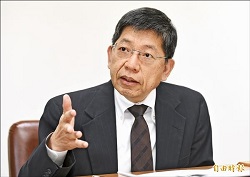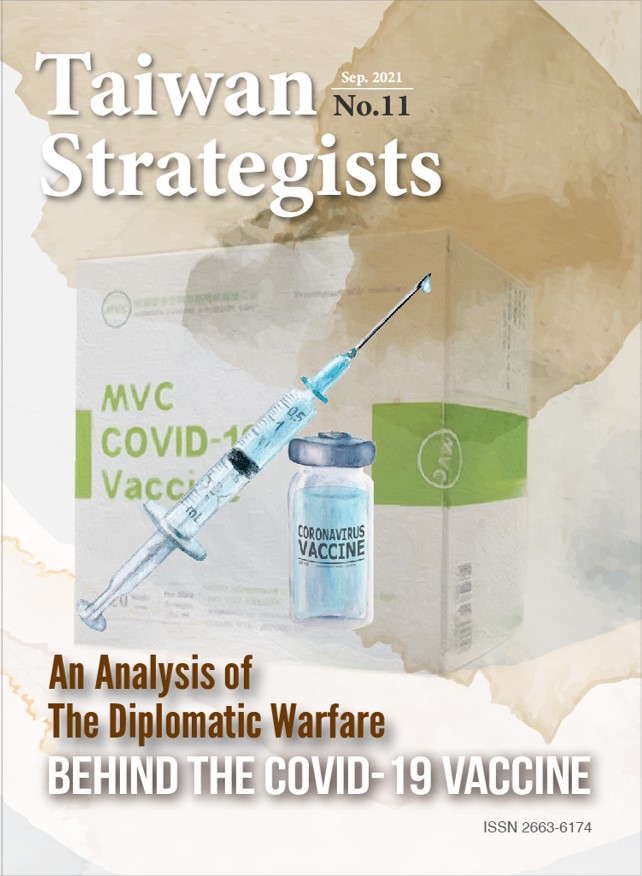Taiwan Strategists No. 11
The Strategy Behind Taiwan’s COVID-19 Immunization Program: National Security and Global Solidarity
Chien-jen Chen
Academician and Distinguished Research Fellow,
Genomics Research Center,
Academia Sinica
In mid-2020, Taiwan started its national COVID-19 immunization plan through procurement of vaccines made by Moderna, AstraZeneca, and BioNTech/Pfizer, and the mass production of vaccines developed by domestic companies. The first case was immunized on March 22, 2021. The percentage of people who had received at least one dose remained very low (0.8%) on May 15 when the Level 3 Alert was announced due to an outbreak of the Alpha variant. The initial low coverage was the result of procurement interference, delayed delivery, misinformation from China and local pro-China media, as well as vaccine hesitancy. The immunization coverage has increased rapidly since early June when Japan, the U.S., Lithuania, and the Czech Republic began to donate large quantities of vaccines to Taiwan. The Taiwan Food and Drug Administration issued emergency use authorization for the MVC-COV1901 vaccine manufactured by Medigen, a domestic company. By September 15, the percentage of people who had received at least one dose was over 50%, and is expected to approach 70% by the end of October. The dual strategy of international procurement and domestic production seems to ensure the national security of Taiwan in the COVID-19 pandemic. Global solidarity through international cooperation is the best policy to minimize the impact of vaccine nationalism.
Keywords: COVID-19, Taiwan Model, Immunization, National Security, Global Solidarity
Influence Competition in U.S. and Chinese Vaccine Diplomacy
Cheng-yi Lin
Research Fellow,
Institute of European and American Studies,
Academia Sinica
This paper analyzes the strategic considerations and practical operations of the United States and China in launching foreign vaccine assistance, including both sides’ diplomatic strategies, characteristics, advantages and disadvantages, and effectiveness. Beijing mainly exports vaccines through bilateral arrangements to better serve its diplomatic functions and purposes. The U.S. is primarily leaving its donated supplies to the COVAX mechanism to administer. The number of doses of China’s pledged donations are far behind the United States. China and the United States are engaged in vaccine diplomacy, but Beijing’s vigorous propaganda raises doubts in the international community. Interestingly, China and the U.S. have one very rare stance in common: on vaccine intellectual property rights exemption.
Keywords: COVID-19, Vaccine Diplomacy, Pandemic Origins, Vaccine Patents, U.S.-China Relations
An Analysis of the Diplomatic Opportunities and Challenges of Vaccine Donations
Charles Chong-han Wu
Associate Professor,
Department of Diplomacy, National Chengchi University
As U.S. President Joe Biden attempts to bring democratic states into regional alliance networks, the effort raises the question of whether democratic regimes are more likely to form close alliances to handle the COVID-19 pandemic. By listing the unknown propositions related to regime types and health governance, the author attempts to explain why the U.S., Japan, and central and eastern European countries have shown great determination to donate vaccines to Taiwan during the vaccine shortage. Taiwan may consider taking this chance to play the role of responsible stakeholder by actively participating in the security community along with other democratic member states, and reciprocally contributing to efforts in public health, transmissible diseases, and high-quality medical services to the international society. It will add strength to Taiwan’s foreign policy decision-making with more diversified elements and characteristics.
Keywords: COVID-19, Vaccine Diplomacy, Hub-And-Spoke, Democracy, Alliances




